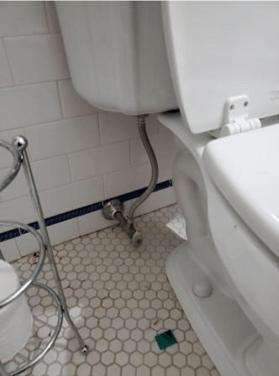Ways to Repair a Water-Damaged Wall in the Bathroom
Ways to Repair a Water-Damaged Wall in the Bathroom
Blog Article
Just how do you really feel in relation to Preventing Water Damage in the Bathroom?

The shower room is extremely prone for wet build-up and also potential water damage as a result of the frequent use water in it. This write-up provides straightforward inspection methods to assist detecting water damages hazards.
The regular use water in the restroom makes it exceptionally susceptible for wet accumulation and also potential water damage. By evaluating it consistently, you can reduce water associated problems.
The following collection of examinations is simple to execute and must be done once in every three months in order to maintain your bathroom healthy and also to prevent prospective water problems caused by the tub, the shower, pipeline joints and also plumbing, sinks, cabinets, as well as the commode
Do not overlook doing these examinations and also be comprehensive while doing them. Remember that these easy assessments can conserve you a lot of cash by giving very early indications for water damage
Sinks and also Cabinets
Sinks and also closets are exposed to moisture as well as humidity day-to-day and also are frequently neglected. Check consistently under the sink and on the countertop above it. Repair any type of drip in the catch as it might recommend drainpipe problems. Look around the sink, slow draining pipes may suggest a blocked drain. Replace sink seals if they are broken or loosened.
Tub as well as Shower
The shower and also bath tub call for unique attention and maintenance. Check the ceramic tiles and replace if broken. Ensure that there is no missing grout between the tiles. Examine and replace cracked caulking at joints where the walls meet the floor or the bathtub. Clogged drains pipes and also pipelines troubles will certainly stop the bath tub from drying as well as may indicate serious problems beneath the bath tub. Seek advice from a specialist quickly to stop architectural damages. Focus on discolorations or soft areas around the bath tub wall surfaces as they might suggest an interior leak.
Plumbing
Signs for water damage are tough to identify given that a lot of pipes are installed inside the wall surfaces.
Pay unique interest to flooring and wall surfaces wetness and stains as they might suggest an unnoticeable plumbing problem. Examine dampness levels in adjacent areas also.
The Toilet
The commode is a vulnerable water joint. Examine the water lines and look for leakages around the toilet seat, in the hose pipe, as well as under the water storage tank. If you discover any indicators of wetness on the floor around the toilet, look for leaks in the toilet rim and also container seals.
Know that hanging bathroom dish deodorants raises the possibilities for clogs.
Water Damage Signs In The Bathroom To Avoid Cleanup
Musty smell
This is one of the easiest signs to catch because musty smells are so odorous. The damp, earthy, moldy smell should be a big red flag. The smell will develop when moisture gets trapped in surfaces, and begins to facilitate mold growth. Leaking pipes under cabinets, inside walls, and behind shower fixtures will cause moisture to stay trapped and not dry, which will lead to mold growth and spread. As soon as you notice any musty smells in your bathroom, have it checked for hidden water damage and cleanup signs.
Visible mold
If the smell isn’t there to give it away, sometimes you will actually see mold growth. Finding mold in your bathroom is a serious problem, because mold is very harmful to your health. By the time mold growth is visible, it also means that water damage has already occurred and been present for some time. The only way the mold problem can be resolved is to find the source of the moisture and get it stopped. To safely and adequately remove mold, you need to have professionals handle the remediation. Do not waste any time in getting mold problems addressed, fixed, and sanitized so that you can protect you and your family from the many respiratory symptoms caused by mold exposure.
Damaged floors
Bathroom floors should be able to withstand some exposure to water while still remaining in good condition. However, when excess exposure or water leaks occur, they will begin to damage even the most water-resistant flooring. If you notice any cracking, bubbling, staining, or warping on your bathroom floors, there is probably a water leak somewhere causing the distortion. If you notice areas of the floor have become softer, or even have a spongy feeling, there is probably damage to the subfloor. Subflooring is typically made up of plywood. When plywood is exposed to water or moisture, it will absorb it. Once it has become saturated, the weight of the excess water will cause the wood to swell and soften. Check the floors in your bathroom frequently to catch any of these sings before they lead to damaged subflooring.
Changes on walls
When water leaks behind walls, it will cause changes in the drywall. Peeling plaster, blistering paint, and soggy wallpaper are all good indicators that excess water is building up behind the wall. Water leaking behind drywall will cause it to swell and be soft to the tough. If you start to notice gaps along the trim of your walls, or where tile meets the wall, it could also be a strong indicator that there is a leak behind the wall. Any changes, distortion, or damage on the walls should be evaluated as soon as you notice it to prevent further water damage and cleanup.

I'm certainly very occupied with Common Causes of Water Damage in a Bathroom and I really hope you liked my blog entry. Sharing is nice. You won't know, you may very well be doing someone a favor. I treasure reading our article about Preventing Water Damage in the Bathroom.
Additional Information Report this page